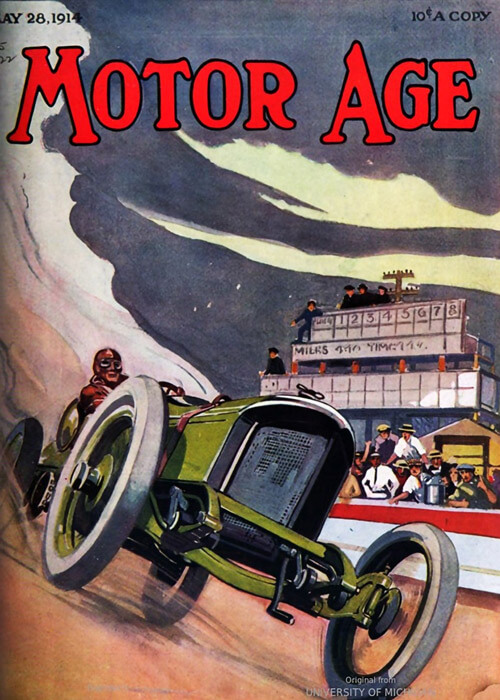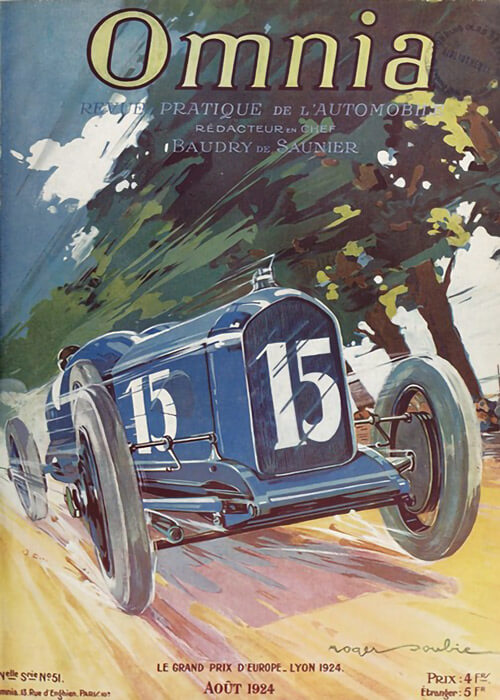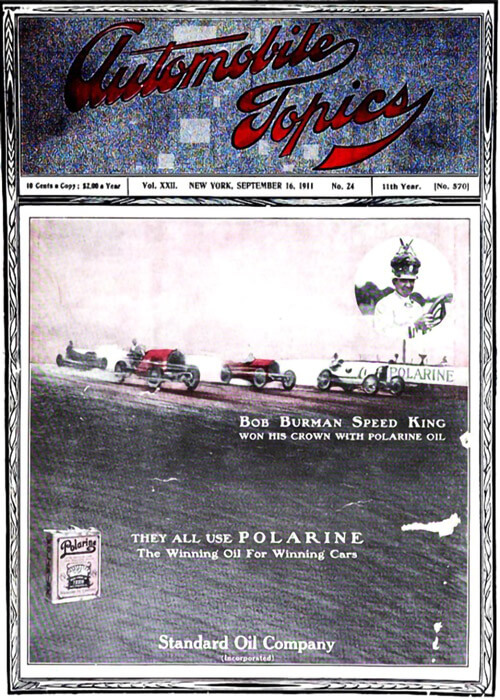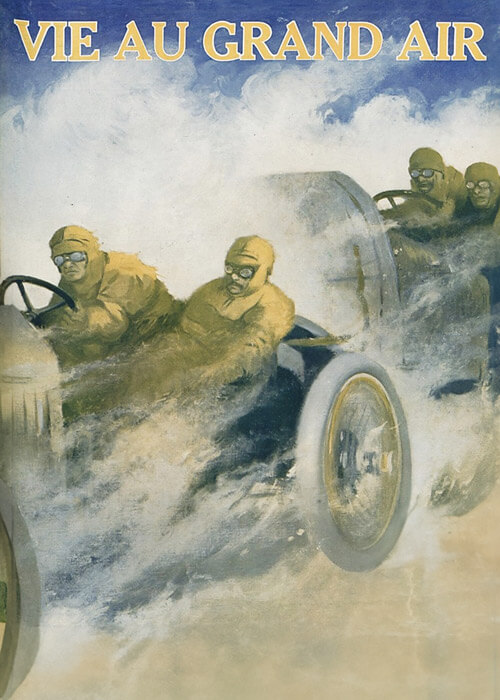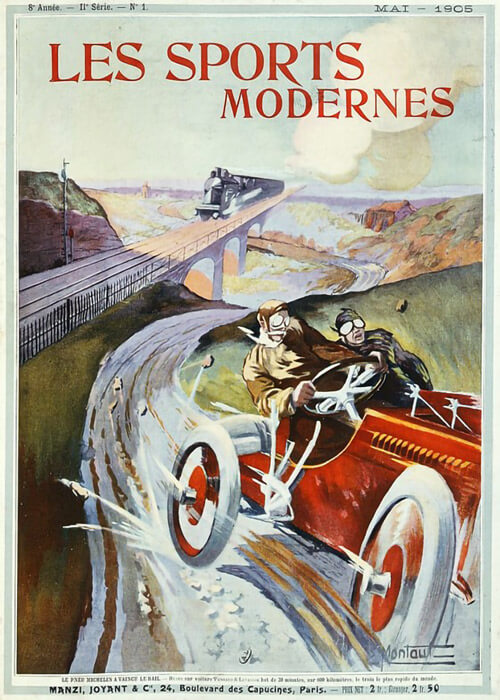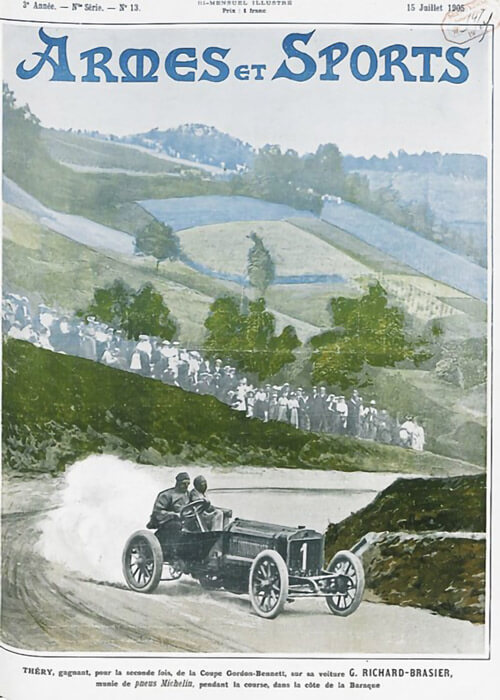



Text and jpegs by courtesy of hathitrust.org www.hathitrust.org, compiled by motorracinghistory.com
MOTOR AGE Vol. XXV, No. 22 Chicago, May 28, 1914
The Fourth Annual Sweepstakes
By C. G. Sinsabaugh
THE 500-mile race at Indianapolis has done more than any other event to establish motoring as a major sport, for there is no other sporting event in the world that can show such a large paid attendance at so high a rate per capita. Even baseball and football cannot bring out such crowds, the closest rival being soccer football in England, which perhaps may show more people but not so large a gate.
Last year 85,000 paid admissions were recorded and it looks as if the 1914 race will show an increase of at least 30 per cent. The management has anticipated this by building new stands which will seat 10,000 more than last year. Still more surprising is the fact that the majority of the spectators come from other cities. Chicago is credited with being the strongest supporter of the race outside of Indianapolis and it is estimated that at least 10,000 Chicagoans attend the event, of which number probably half drive there in their own cars. When you figure that it must cost each visitor at least $50 for this 1-day outing, then you can arrive at a fair estimate of what the American public annually spends on this classic.
Importance of 1914 Race
There can be no doubt of the 1914 race being the greatest motoring event ever contested in the world. Not even in the earlier Vanderbilts was foreign representation so strong as in this year’s sweepstakes. Of the forty-five cars entered twelve are of European make. Of this number eight are driven by foreign drivers, sent over by their respective factories to battle for the American gold. Opposed to them as such American manufacturers as Stutz, Mercer, Maxwell, Great Western and one or two others, while the remainder of the field is made up of special cars either built or rebuilt by drivers who see a chance to pull down big money.
And the big money is there. The speed- way management has hung up a purse of $50,000, divided as follows: $20,000 for first; $10,000 for second; $5,000 for third; $3,500 for fourth; $3,000 for fifth; $2,200 for sixth; $1,800 for seventh; $1,600 for eighth; $1,500 for ninth, and $1,400 for tenth.
The Accessory Prizes
In addition to this the manufacturers of accessories have come forward more liberally than ever before, their offerings amounting to $17,375, while in addition there are trophies valued at $18,750. Summing them all up, one finds that the race represents $86,225. The winner should pick up close to $30,000 as a result of about 6 hours and 30 minutes of driving. The trophies hung up include the famous Wheeler & Schebler cup, valued at $10,- 000, which goes to the leader at 400 miles; the Prest-O-Lite trophy, worth $2,750, for the leader at 300 miles; the Remy trophy and brassard, worth $2,500, for the leader at 200 miles; the $2,000 Rayfield trophy for the winner, provided he uses a Rayfield carbureter, and the $1,500 G & J trophy for the leading driver at 100 miles.
The accessory offerings represent a variety of interests, thirteen different concerns being on this list. The liberality of this section of the trade has led to an innovation which will protect its interests. The majority of these prizes have been turned over to the contest board of the American Automobile Association, which will certify whether or not the conditions have been met. The list of accessory prizes, depending of course on the use of the accessory manufactured by each concern, is as follows:
Wheeler & Schebler, carbureter manufacturers – $1,000 for first, $300 for second, $200 for third, $100 for fourth.
Longuemaire Co., carbureter manufacturer- $1,000 for first, $400 for second, $200 for third.
Findeisen & Kropf Mfg. Co., maker of Rayfield carbureters – $1,000 for first, $300 for second, $200 for third.
J-B Co., carbureter manufacturer – $1,000 for first, $300 for second, $200 for third.
Bosch Co., magnetos – $500 for first, $300 for second, $200 for third.
Remy Co., magnetos – $1,000 for first.
Standard Rubber Bearing Co., Rudge-Whitworth wire wheels – $500 for first, $250 for second. $125 for third.
Grossman Co., Red Head spark plugs – $500 for first, $250 for second, $100 for third.
Hartford Suspension Co., Truffault- Hartford shock absorbers – $250 for first, $150 for second, $100 for third.
Clarence N. Peacock & Co., Ames equalizing spring- $250 for first, $150 for second, $100 for third.
Bosch Co., spark plugs – $100 for first, $100 for second, $100 for the third driver. Champion Spark Plug Co., spark plugs – $500 for first, $250 for second, $125 for third, $75 for fourth, $50 for fifth. Janney-Steinmetz Co., tanks – $75 for first, $50 for second, $25 for third.
In addition, there are four other accessory prizes of a somewhat different nature. The Firestone company is giving a bonus of $3,000 for winning the race on Firestone tires, with $1,000 for second. The Rayfield carbureter people also hang up $100 for the eliminating trials, the money being awarded in case a Rayfield-equipped car makes the fastest time in these trials. In addition the Waltham Watch Co. offers a $500 watch, the finest it makes, for the driver finishing first, second or third, who stops the least time at the pits. It is styled the Waltham efficiency prize. The Bosch company also offers $500 if Dawson’s 500-mile race is broken by the winner and Bosch equipment is used.
The speedway management estimates that it will cost $15,000 more to stage this race than it did to put on last year’s. There have been several most important additions made to the plant for one thing. On the south turn there has been erected a new stand, made up entirely of boxes. Another huge stand has been built at the extreme north end of the group of grand- stands lining the homestretch.
In addition, it has been found necessary to greatly enlarge the press stand. Even last year with all the room provided there was great congestion here, so this time the management has made more room by building a sort of a porch to the south where will be located those newspaper men who are not actively engaged in reporting the race.
Considerable work also has been done on the track. For instance, a new section of brick has been put in high up on the bank as one enters the south turn. Last year there was a bump there – slight in itself but almost a mountain when a car traveling at 80 miles an hour hit it.
A new tunnel has been put in on the south turn, eliminating the old bridge that formerly was used to reach the infield. This leaves only one bridge – in the homestretch – but that is to be done away with another year, for the drivers say that it is like plunging into a tunnel to go under it at speed. Still another improvement is the placing of dirt banks on the inside of the track. One bank is located at the farther side of the south turn and the other is on the last turn the going into homestretch. The dirt bank is in- tended to stop cars running on the track from plunging into the infield.
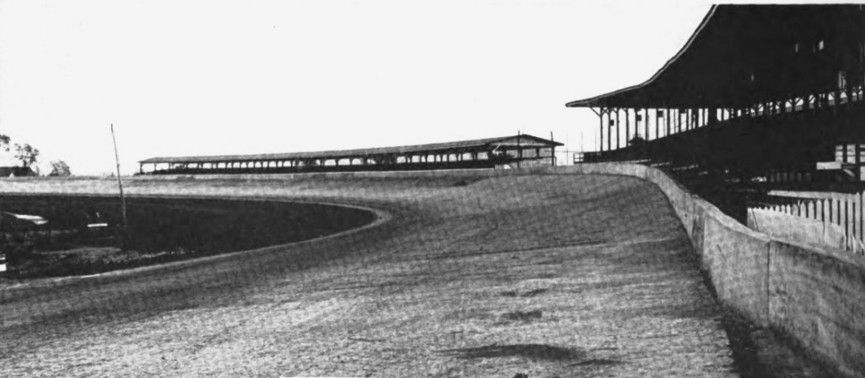
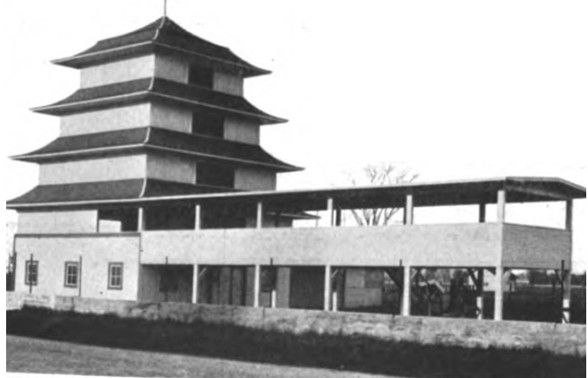


Photo captions. – SOUTH TURN SHOWING THE NEW STAND OF BOX SEATS – NEW PRESS STAND WITH PORCH ADDED – DIRT BANK ON INSIDE ON SOUTH END OF TRACK – ONE OF THE NEW STANDS – THE NEW $1 SEATS
